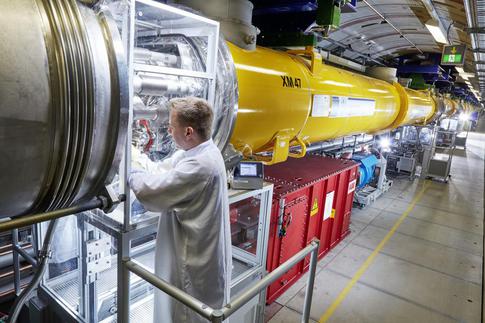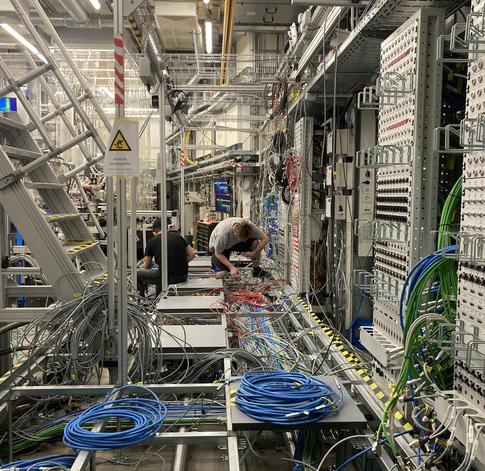XFEL: European XFEL warmed up for maintenance and conversion for the first time
European XFEL warmed up for maintenance and conversion for the first time

For the first time since its start eight years ago, the European XFEL, with its superconducting cavities for electron acceleration, has now been warmed up to room temperature for mandatory maintenance and extensive conversion work. Once the current work has been completed, the facility will be cooled down again to minus 271 degrees Celsius before it is available for experiments again in spring 2026. (photo: European XFEL)
Numerous tasks are now planned for the entire facility over the next several months before the accelerator is cooled down to its operating temperature again. The X-ray laser is expected to be available for experiments again in spring 2026.
The immediate reason for the operational break is a mandatory inspection of helium valves, which was not possible when the system was cold. "In addition to this maintenance work, a large number of new installations are planned, which our teams at European XFEL and DESY have been preparing for many years," explains Winni Decking, head of the accelerator team at DESY. “Among other things, we are installing a completely newly developed electron source at the beginning of the accelerator. The implementation of all these innovations required precise planning and now demands tireless effort. After that, the European XFEL will be thoroughly maintained and open to researchers from all over the world again with many new possibilities at the beginning of 2026.”
European XFEL Managing Director Prof Thomas Feurer emphasises: "The work is an important step towards implementing our future strategy, which we aim to realise by 2032. Key milestones this year include the construction of a new instrument and preparatory steps for the installation of new superconducting undulators – structures that generate X-rays – enabling more precise exploration of the nanocosmos through increased light intensity and shorter wavelengths."

At the same time, the European XFEL instruments are taking the opportunity to prepare themselves for the restart of the accelerator at the beginning of next year. (photo: European XFEL)
The European XFEL's superconducting linear accelerator is 1.7 kilometres long, making it the longest of its kind in the world. It accelerates electrons to nearly the speed of light and energies of up to 17.5 gigaelectronvolts – equivalent to the acceleration electrons would achieve through an electrical voltage of 17.5 billion volts. The electrons then pass through special magnetic structures, known as undulators, which steer them onto a slalom course, generating intense X-ray laser flashes in the process. With up to 27,000 such flashes per second, the European XFEL achieves luminosities that far exceed those of conventional X-ray sources.
The extreme cold in the accelerator – just two degrees above absolute zero – ensures that its superconducting cavities operate without electrical resistance. This allows energy to be transferred to the electrons particularly efficiently.
Once the current work has been completed, the facility will be cooled down again to minus 271 degrees Celsius before it is available for experiments again in spring 2026.
